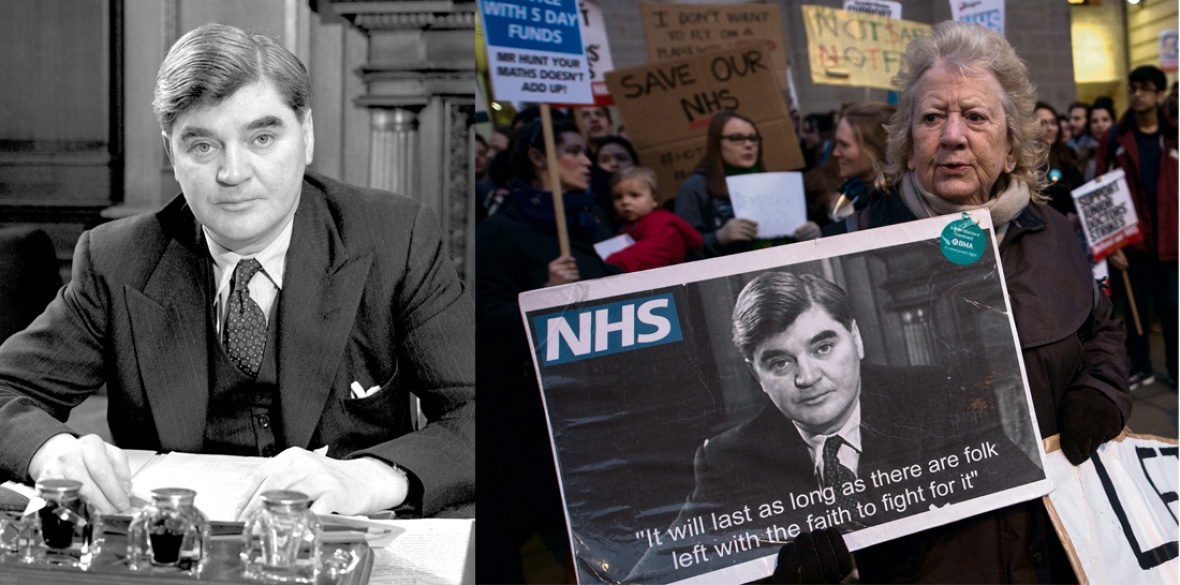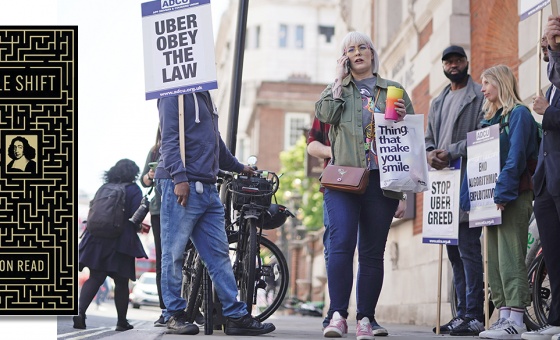This is the last article you can read this month
You can read more article this month
You can read more articles this month
Sorry your limit is up for this month
Reset on:
Please help support the Morning Star by subscribing here
EVERYDAY life in the US: a baby falls and hits his head. The family take him to the emergency room. The staff say he is fine, allow him a nap, feed him some formula milk and send him home: bill $18,000.
An angry insured person tweets giant insurance corporation Cigna to ask why they had declined authorisation for an operation requested by her neurosurgeon.
Investigative journalists reveal colossal payments by pharmaceutical companies to influence prescribing habits of doctors, with $9.15 billion paid to 905,000 doctors and 1,216 teaching hospitals over three years.
The mind-blowing costs, corruption, inefficiency and ineffectiveness of the US system never cease to amaze.
Yet many people fear that — regardless of the inevitable political backlash against any party that destroys our NHS completely — Theresa May’s government is embarked on that process.
More likely than a Tory drive towards the US anti-social private insurance model is the type of social insurance model used in many European countries.
These systems embody some of the excess overhead costs, bureaucracy and inequity of the US system, with widespread use of charges to see a doctor and for hospital treatment.
Yet all of the systems singled out as good examples (France, Germany, Netherlands, Switzerland) cost more per head than the NHS.
That’s because when it was formed in 1948 the NHS embodied the most efficient method of raising the funds — through the general taxation system already in place, through which those earning more pay more, and the poorest pay the least.
Instead of going down the complex path of insurance funds, it was set up as a single, universal system to cover the whole population.
It needed no insurance checks or cash desks. Not only were hospital care and GP consultations free to all at point of use, but so too were drugs, eye tests and spectacles, dental checks and treatment.
For the first time, anywhere, none of these services were to be paid for by those who could afford it and foregone by those who could not.
The market in healthcare was swept away. This was the biggest and most ambitious modernisation that could be accomplished within the continued framework of capitalism.
The NHS hospital system was formed through the nationalisation of a shambolic “mixed economy” of hospitals to create a single system and allow — for the first time outside of the wartime emergency medical service — the planning and allocation of resources according to need.
Doctors were at first divided: BMA opposition to the NHS was driven right up to July 1948 by the most conservative layers of GPs who had to be dragged into the system by the mass enrolment of their patients.
But one grouping that never reconciled to the NHS that was so widely welcomed was the right wing of the Conservative Party, which trooped 21 times through the parliamentary lobbies to oppose the NHS.
The NHS, built amid the wreckage of war and in a time of economic austerity, was never perfect, and never adequately funded to deal with the backlog of health needs it encountered. But for three decades it achieved what appeared to be consensus support.
That ended with the election of Margaret Thatcher in 1979 and her government’s embrace of neoliberalism. Since then we have seen almost 40 years of efforts to unpick and undermine the NHS that Nye Bevan built.
The underfunding of the NHS in the mid-1980s — seeking to push middle-class families towards health insurance — was accompanied by widespread privatisation of hospital support services from 1984, and from 1988 the first steps to split long-term care of the elderly from the NHS and privatise it.
Thatcher’s “internal market” proposals were pushed into law in 1990 as she was pushed out of office. In 1992 the private finance initiative was launched to scoop out profits for the private sector from public sector capital projects such as hospitals.
Each of these measures served to fragment and dislocate the NHS as a system, divide the service into purchasers and (competing) providers, slice off potentially profitable contracts from public funds for private companies, and run the NHS more like a market.
Thatcher’s mantle was taken up by Tony Blair’s government, which in 2000 took the progressive decision to commit to 10 years of increased real-terms funding, but also wasted huge sums setting up a commercial directorate in the Department of Health, creating a new market in NHS-funded clinical care, with NHS hospitals to be paid on a “payment by results” (cost per case) basis.
Foundation trusts were established to run as businesses. Private firms were brought in to provide low-risk elective surgery, mental health services, community health services, diagnostics, pathology and even GP services — all of which could be better and more efficiently provided through existing NHS organisations.
From 2010 David Cameron’s government took over, imposing the most brutal austerity freeze on health spending, and forcing through the 2012 Health and Social Care Act which further fragmented the system and entrenched a competitive market in healthcare — overseen by the Competition and Markets Authority.
Some 207 new purchasing bodies (clinical commissioning groups) were required by law to carve up local services into contracts and offer up an ever growing range of clinical services to competitive tender.
Foundation trusts were encouraged to raise up to half their income from private medicine. Management of Hinchingbrooke Hospital was “franchised” to private hospital firm Circle.
As we know, much of this has gone horribly wrong. Time and again the private sector has shown by its failures that it lacks either the expertise or the commitment to deliver the range of services the NHS requires. They pick and choose what they hope will be profitable contracts, fail — and walk away.
There are no glowing examples of success from any of these costly and complicated “reforms” — the academics who tamely sang the praises of competition, markets and every government proposal have largely given up searching for evidence.
Major NHS trusts are now carrying enormous and insoluble deficits, with an NHS tariff so low they lose 5 per cent of the cost on every patient treated. Ironically as private firms walk away from underfunded contracts, desperate trusts are again resorting to a new round of privatisation, hiving off support staff into “subcos” without NHS terms or pensions, in an effort to fiddle savings on VAT.
As actual fragmentation has increased, talk of “integration” has grown. NHS England, presiding over an alphabet soup of new structures designed to work around the chaos created by the 2012 Act (STPs, ACOs, ACSs, ICSs etc), has brought forward various plans — each of them lacking any public acceptance, accountability or legal legitimacy.
Almost four decades of failed “reform” have tested markets and privatisation and shown them to be useless, underlining the essential strength of Bevan’s model.
As we celebrate the 70th birthday and continued survival of the NHS, with around 90 per cent of its budget still within the public sector despite the efforts of recent governments, and treatment still free at point of use, we must step up the fight for sufficient funding to ensure the safety and availability of services — and new legislation from a Labour government that will reinstate the NHS on its Bevanite foundations as a public service, publicly provided, publicly funded and free, for all, forever.
John Lister is editor of the Health Campaigns Together newspaper.












